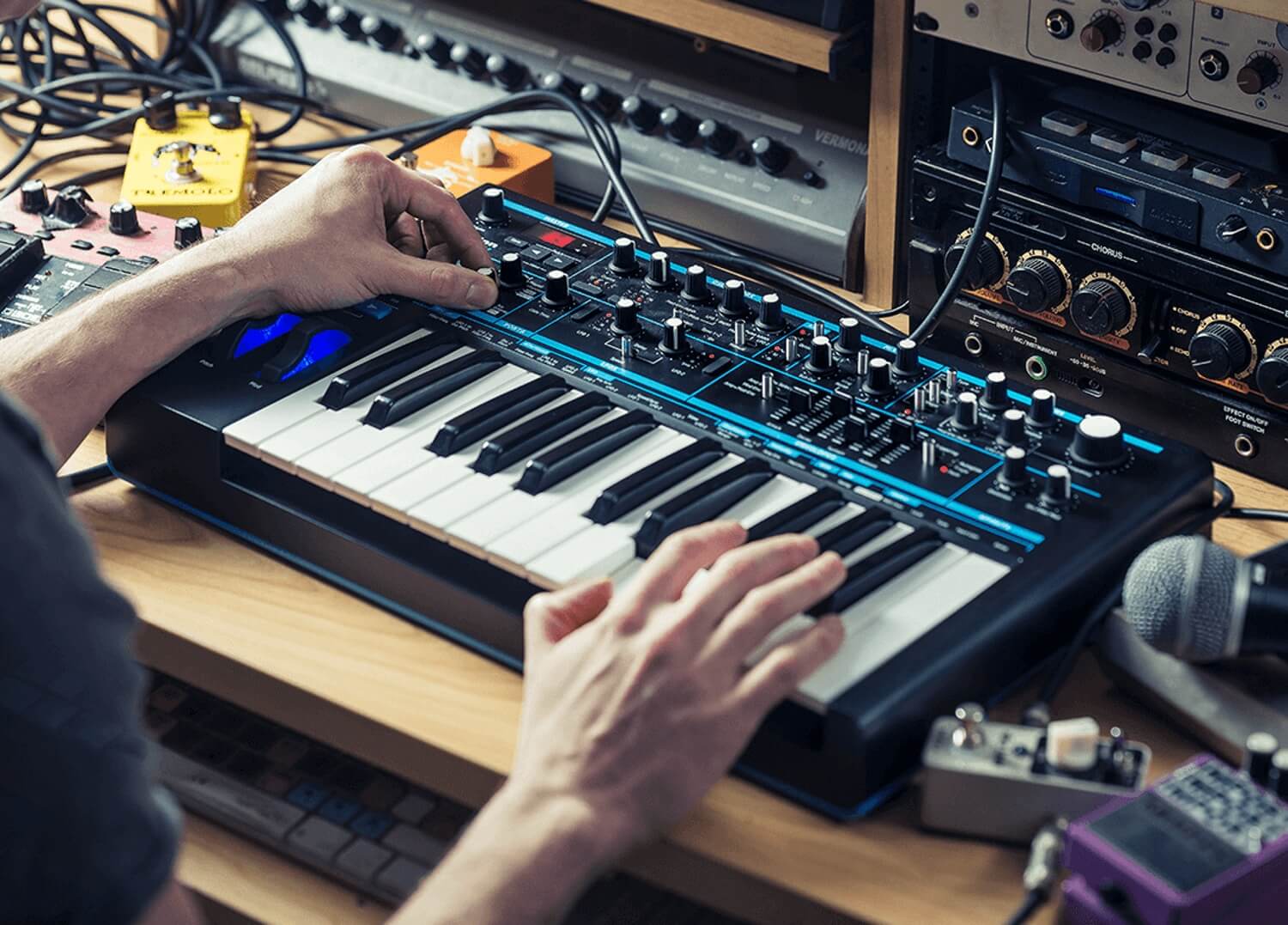
Do you want to get professional sound quality from a synth without paying astronomical prices? We're here to help as we aim to find the best synths under $1000. There are many great options under that price, and we've included the top 10 here that we were very impressed by.
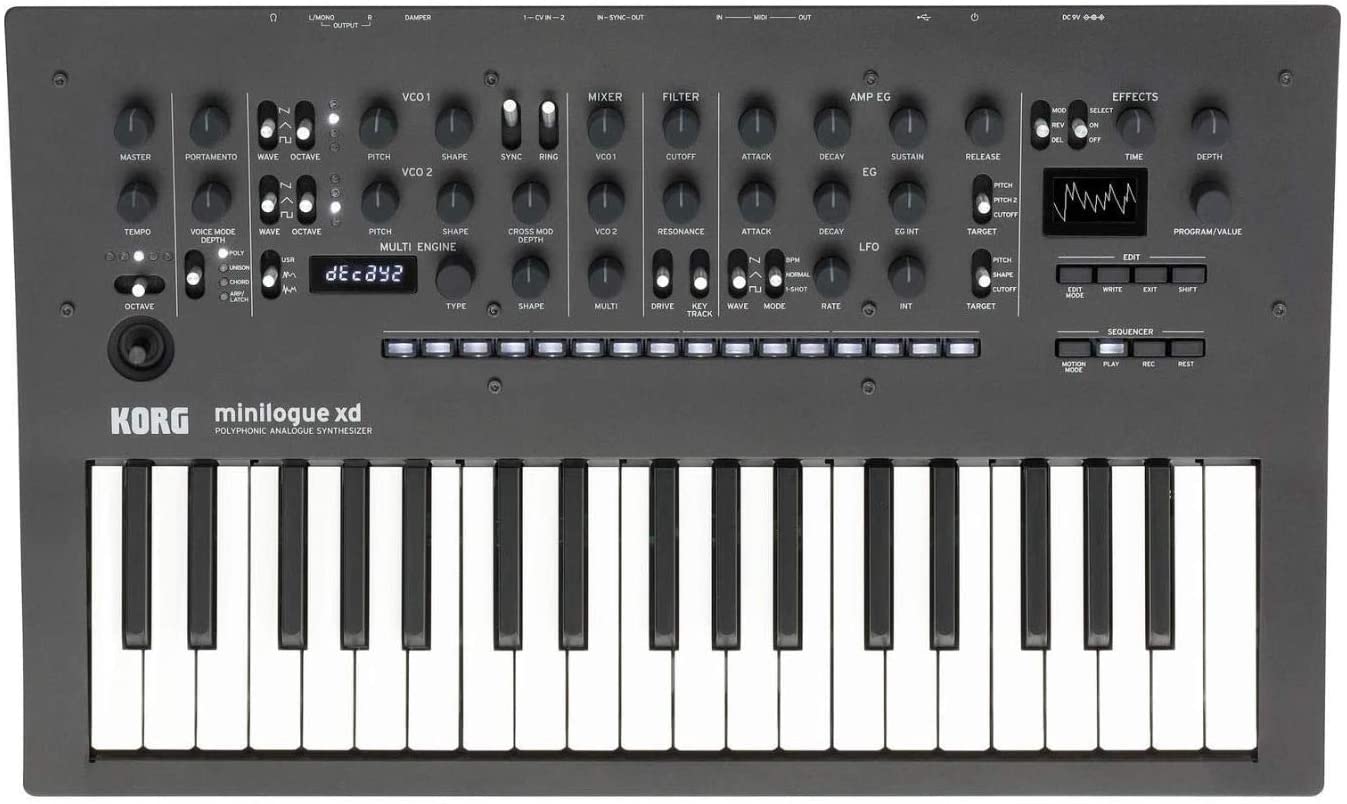

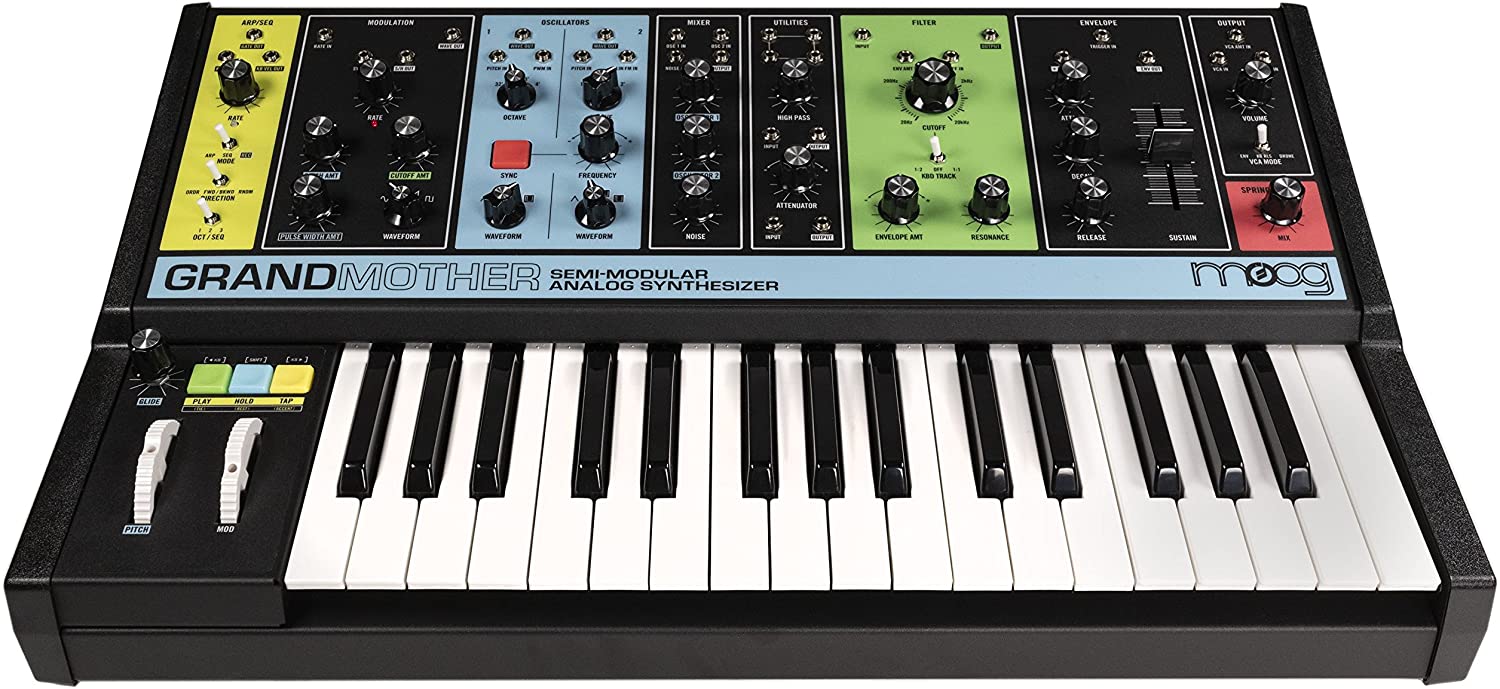

What are the best synthesizers under $1000? Max polyphony is a crucial feature along with the keyboard, sequencer, oscillators, and connectivity as they all have a large impact on the overall performance of the specific model and how easy it is to master. You also need to work out whether you want a digital or analog synth as this might affect your experience and the sound you get. We've looked at all of these features in detail so you can be confident in your buying decision. All you need to do is read on to find the best synth under $1000. Let's get started!
More features: digital multi-engine, multiple effects and user customization, voice mode, joystick, micro tuning, oscilloscope and motion view display

We think this is the best analog synth under $1000. It’s very easy to use with 37 keys that are slim and velocity-sensitive. Additionally, it has a 16-step polyphonic sequencer that gives you plenty of versatility in the sounds you create.
There are plenty of connectivity options, so you shouldn’t have any problems setting up the rest of your gear. It has an impressive range of features with multiple effects available and high user customization. Overall, it’s a brilliant synth at a great price.
More features: 64 factory presets, 64 slots for user patches, versatile sound engine, two discrete filters
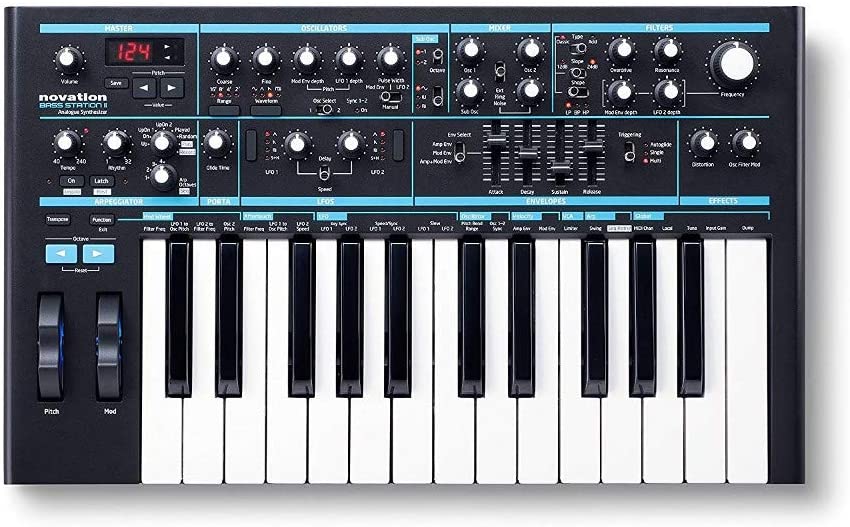
For those who think that the previous option is still quite expensive, check this one. Here, you can find brilliant value for money as it gives you plenty of functionality without a high price tag. It’s a monophonic device that features an analog signal.
This budget synth under $1000 gives you up to 4 sequences and 2 oscillators that allow you to create rich and textured notes. It gives you all the connectivity you need and allows for plenty of creativity with 64 slots for patches along with 64 factory presets.
More features: semi-modular, requires no patching, hardware spring reverb, analog ADSR envelope generator

Anyone familiar with synths will know that Moog is a huge name that you can rely on. This is a brilliant monophonic synth from this brand, which has 32 velocity-sensitive keys that feel great and allow you to create fantastic music.
It has an impressive 256-note sequencer with 3 sequences available and 2 oscillators. It’s semi-modular, and that is a great feature for a model under $1000. Also, it has an ADSR envelope generator, which shows that this is a premium model and a fantastic option.
More features: virtual circuit modeling, record/playback stereo audio, multiple effects

For those who wanted a digital model, we thought this was the best synthesizer keyboard under $1000. As seen with other keyboards from this manufacturer, Yamaha is renowned for making high-quality products at affordable prices.
This could also be ranked as the best polyphonic synth under $1000, considering it gives you 128 notes at once. It means you can utilize the full range of 49 keys. On top of that, it has a powerful sequencer with 16 tracks available.
More features: 3 ADSR generators, 8-channel modulation matrix, tablet remote control, built-in Wi-Fi, chord memory, true bypass mode, high pass filter
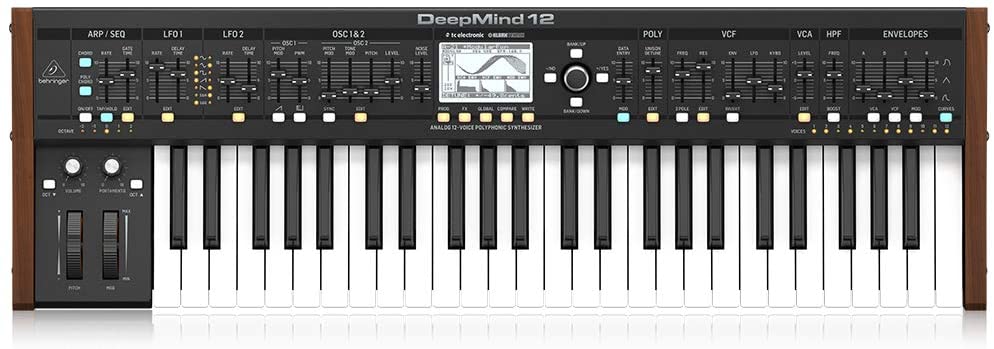
This is another great contender for the best synth under $1000. It’s an analog model that has 49 full-sized keys along with a vast range of controls. To go with that, you have a good range of outputs here, so connectivity shouldn’t be a problem.
This great synthesizer under $1000 has broad functionality, which includes a 12-note polyphony, a 32-step sequencer, and 2 oscillators. It’s ideal for creative minds and allows you to make music like never before.
More features: semi-modular, CV Mod Matrix, 4-mode filter, sequencer/arpeggiator, ADSR type envelope generator
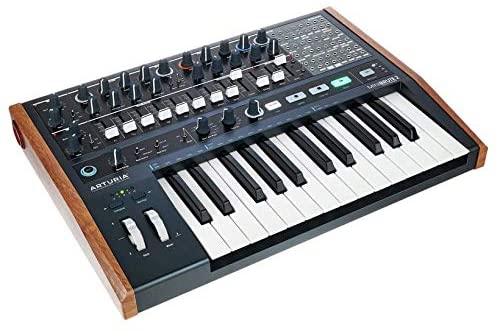
If you want a beautiful and stylish synth, this can well be what you’re looking for. While it looks great, it also has excellent functionality with its 8-step sequencer, velocity-sensitive keys, and 2 oscillators with 6 waveforms.
It is a monophonic synth that is perfect at allowing you to create a wide range of different sounds. That’s due to it being semi-modular and also having an ADSR envelope generator. Apart from that, there are the sequencer and arpeggiator that help to make this a dynamic synth.
More features: Mono/Duo mode, VCO/LFO Gate Reset, Editor/Librarian software, Multidrive effects, 16 presets
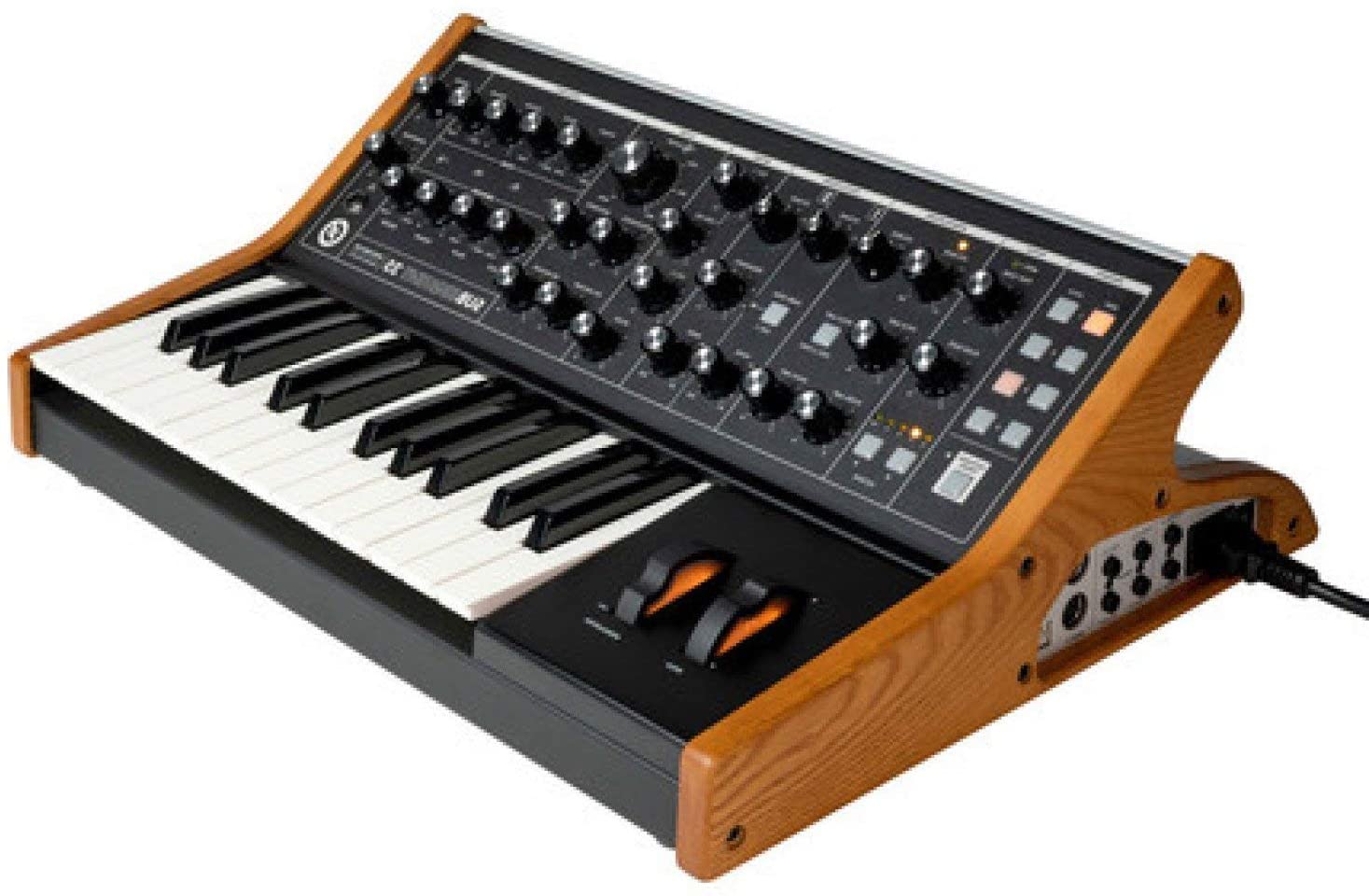
If you want the best synthesizer under $1000, then you can never go wrong with a Moog synth. This is another monophonic option and one that has beautiful styling with its wooden ends and raised control board.
It’s perhaps the best keyboard synthesizer under $1000 for those wanting velocity-sensitive keys. It has a step sequencer along with 3 oscillators and a noise generator. Also, there are other great features here, such as the multidrive effects and 16 presets.
More features: wave expansion slot, performance mode, downloadable sounds, unique vocal effects, can run on batteries

If you need a larger keyboard, this could be the perfect synth for you. It has 61 keys available, which puts it close to a full-sized keyboard. On top of that, it has a wide polyphony with 128 notes available.
The 8-track pattern sequencer makes it very easy to build up your sounds, and you also have the option of having unique vocal effects and downloadable sounds. As if it’s not enough, there is a wide range of connectors, so you should have no issue with plugging anything you need.
More features: self-oscillating high-pass/low-pass filters with distinctive distortion, ESP, flexible patching system
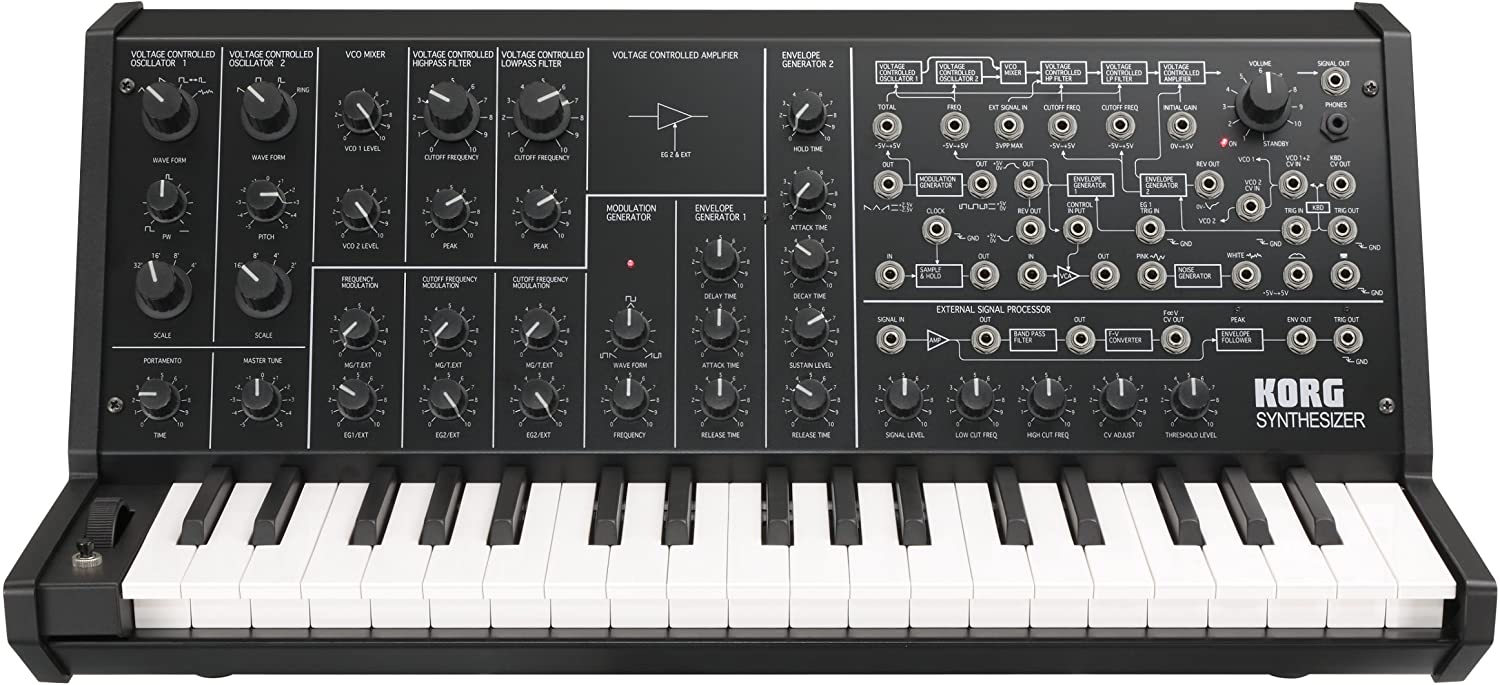
Korg is another huge name in the world of synths, and this is a wonderful model from them. It’s monophonic, which many people prefer, and the keyboard has a range of 37 different keys that have a great feel.
It doesn’t have a sequencer included, but it does have 2 oscillators that have 4 waveforms. The filters on this synth are also excellent with both low and high pass filters. Moreover, it gives you a wide range of connectivity options, so that will never be an issue.
More features: 64 presets, 64 user memory slots, multiple effects, arpeggiator, phase recorder
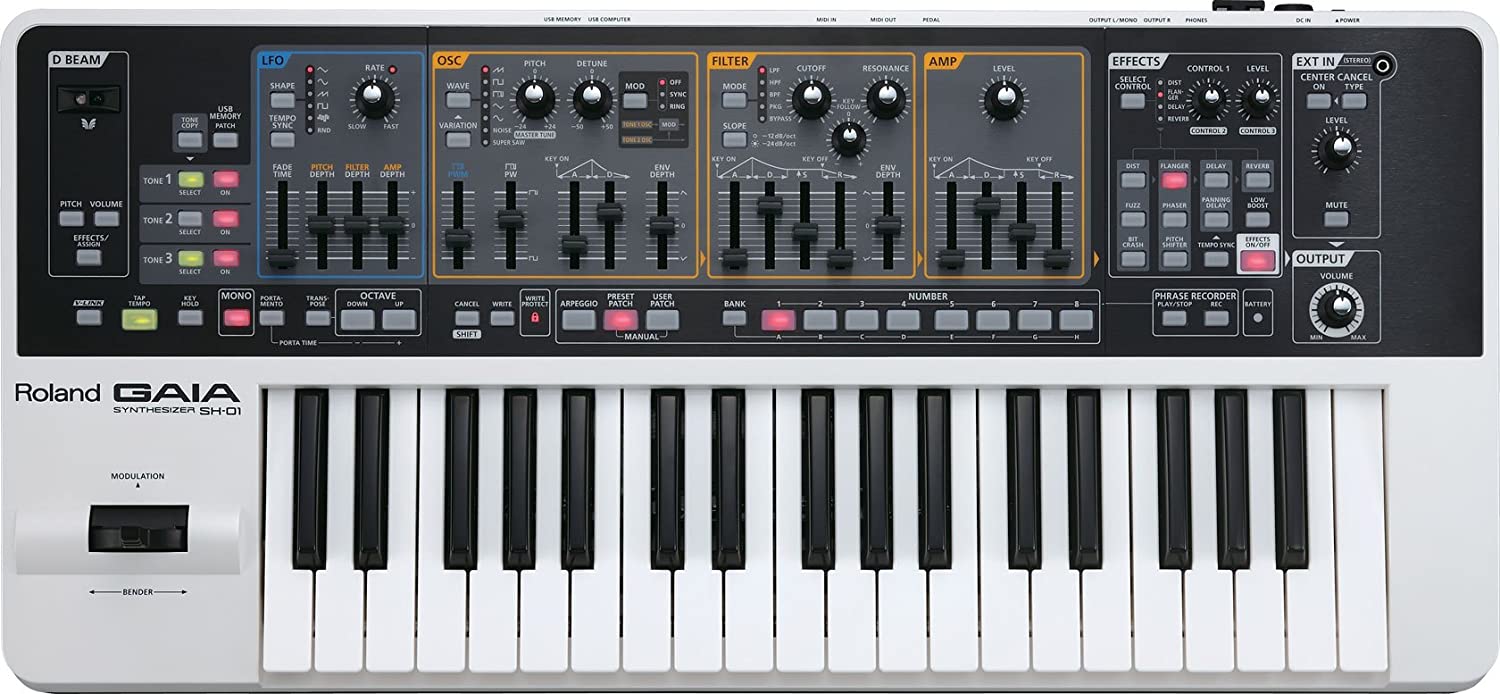
Here is another option from Roland and one of the best digital synths around. It has a good polyphony with up to 64 notes, and the 37 keys give you plenty of versatility. Additionally, those keys are velocity-sensitive, which provides you with a real piano feel.
As with others on this list, you’ll need to buy a separate sequencer, but it shows excellent performance with the oscillator. There are a lot of other features to like here, too, such as the 64 presets with 64 user memory slots.
As with any product, you always want to get something that perfectly matches your needs, along with it being within your budget. That’s why we’ve written this buying guide and consulted with our experts to give you the highest quality information. We’ve taken a close look at all of the key features to see how they relate to you. By the end, you should have a clear idea of your best synth under $1000.
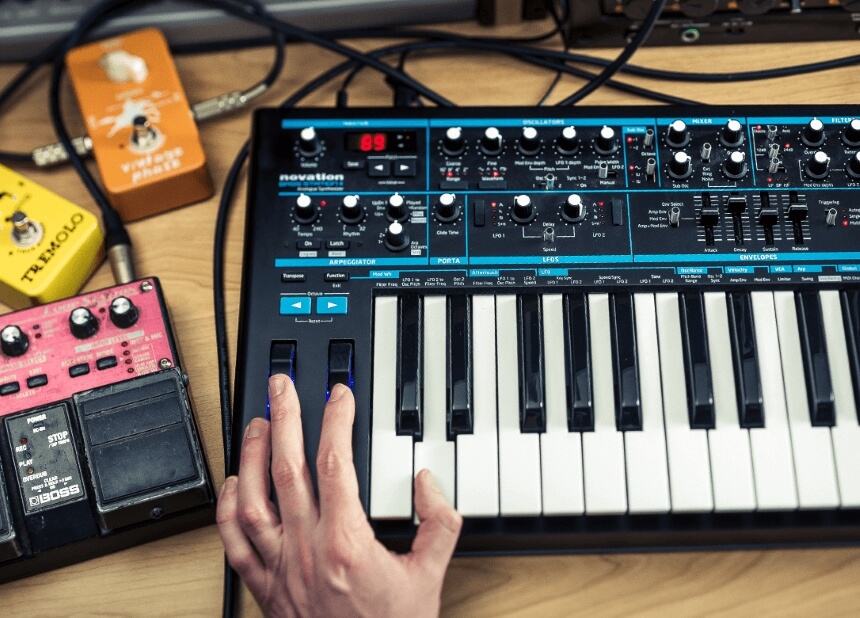
Not everyone can afford to pay $4,000, and you shouldn’t bankrupt yourself to get a synth that will only have a bit more functionality than a model you can get for much cheaper. Unless you get paid for using a synth, it doesn’t really make sense to get a model at the absolute top end. If that’s what you’re developing towards, then a cheaper synth is going to give you all the tools you need.
The biggest reason to get a synth under $1,000 is that there is a range of brilliant options available. Here, we’ve looked at mid-range options that still sound professional but have much more functionality than budget models. They are perfect for musicians who want to make exceptional music at a reasonable cost.
You want a synthesizer, but what exactly are you looking to get out of it? Do you want one that’s easy to play or has weighted keys? Do you need a model that has the widest range of effects? These are the types of questions that are important to answer before rushing with your buying decision. As we go through all of these key features, see which ones are most important to you, and this should then give you a clear idea of the best synth for you.
This is the eternal debate and one that ultimately comes down to personal preference. The technical difference is down to the circuitry and waveform, with complete novices not really noticing the difference between the two.
Analog models, such as the Korg Minilogue XD Gen Synthesizer, often sound warmer and are more intuitive to use. On the other hand, digital synths, such as the Yamaha MX49, can be cheaper and have powerful presets. Most synth experts prefer the analog signal, but some digital models are fantastic as well.
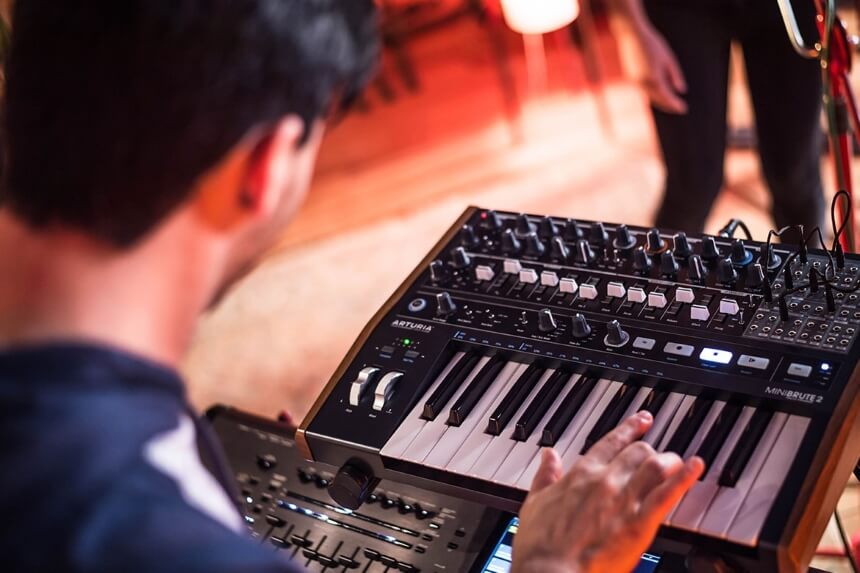
The best one will depend on what type of sounds you want to produce. The Roland JUNO-DS61 has a great range of polyphony with 128 notes available to be played at the same time. At the same time, the Arturia MiniBrute 2 Semi-Modular Analog Synthesizer is an excellent monophonic synth.
There are two important factors here, and they are the number of keys it has and how they feel. The number of keys you need will depend on what type of music you’ll be making and how many notes you need to play at one time.
The key feel determines how they play, as some like to have ‘velocity-sensitive’ ones, which is what you get from an acoustic piano. This makes the key feel acoustic, and the volume of the note changes with how hard you press it.
You get velocity-sensitive keys with the Moog Subsequent 25 Analog Synthesizer that make it great to play.
The sequencer will play a sequence of notes created by you. This can be used for a wide variety of different sounds, and a great example of it is setting up a drum pattern. Thus, some have this built into your synth, whereas with others, you’ll need to get a separate sequencer.
The 32-step sequencer of the BEHRINGER DeepMind 12 is particularly good and gives you great versatility in the music you can create. If you are fine with using a separate sequencer, then a few models don’t have one included.
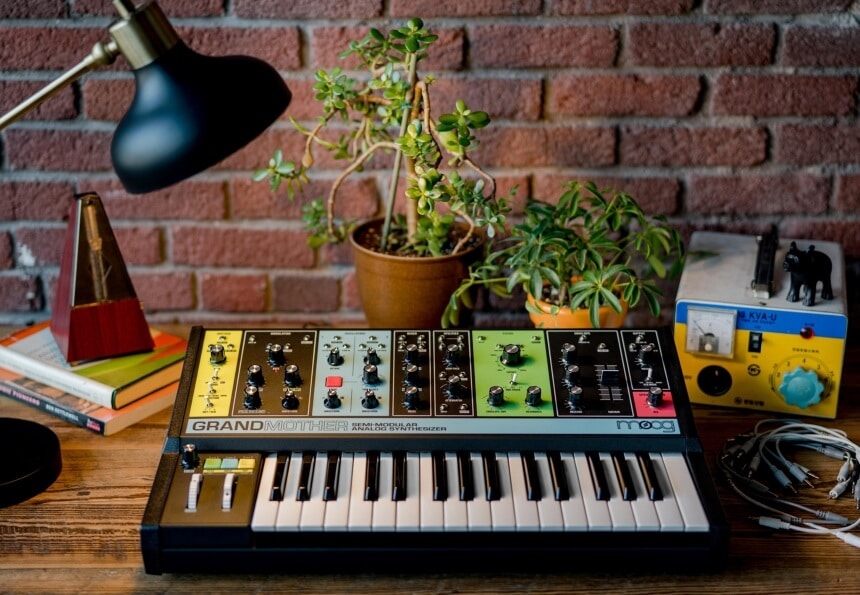
The great thing about synths is that they give you incredible customization on the music you can make. A lot of that comes from their effects and filters they use. As you might already know, the filter is an important part of a synthesizer as this will remove different frequencies from the audio signal.
There are a few different types of filters, depending on which frequencies are cut off. A low-pass filter. for example, will only allow frequencies below your cut off point. As for the high-pass filter, it does the opposite. You can also have band-pass filters that will only allow a middle range.
Along with the keys, you’ll also have to think about the controls on the synth. The arrangement of these will change from one model to the next, and this is mostly going to come down to personal preference. If you’ve had a synth before, it’s likely that you’ll want similar controls to what you’ve used before.
You generally have three types of controls on a synth, and they are wheels, sliders, and knobs. The Roland JUNO-DS61 is an example of a synth that has all of these.
There are many things that you may want to connect to via your synth. Headphones and microphones are obvious ones, but you’ll most likely want to connect to an amp, a computer, and other instruments. Thus, it’s a good idea to think of your desired set-up before you get started.
Most synths will give you a range of different options, but they aren’t all the same, and therefore, you should always double-check exactly what it is you’re getting. The Korg MS20 Mini Semi-Modular Analog Synthesizer is a great example of a model that has a brilliant range of connectivity options.
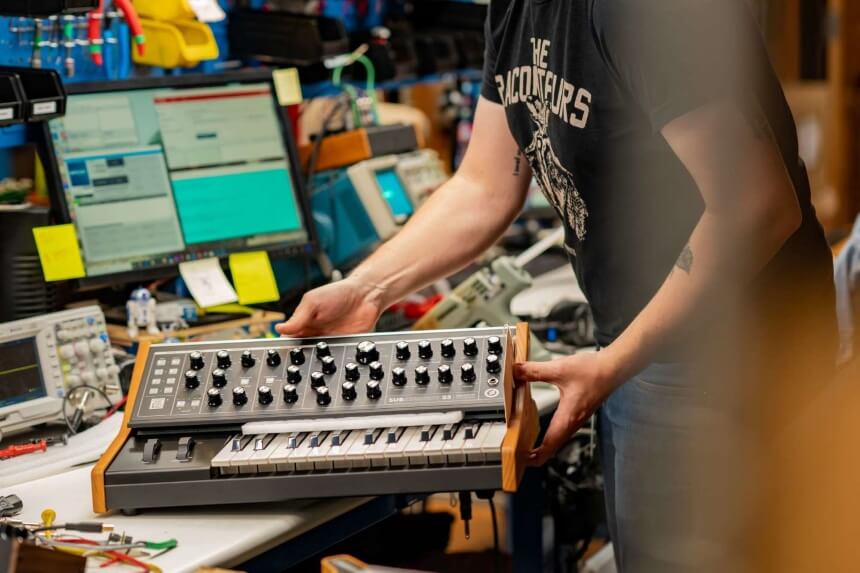
If you wanted a small synth, then you wouldn’t get much better than the Arturia MiniBrute 2 Semi-Modular Analog Synthesizer, which you can take anywhere. You may also need your synth to be able to run on batteries. If so, the Roland JUNO-DS61 could be a perfect choice.
Arpeggiator – This takes notes and plays them in a sequence. This allows you to create melodies and patterns.
Envelope (ASDR) – This controls the length and nature of your tone and consists of the attack, decay, sustain, and release of the note.
Modulation – This is the ability to make a routine change to your signal. You can usually do this to all parts of your synth.
There are many other features of a synth to look out for, such as the amplitude, an attenuator, a gate signal, resonance, sinewave, and waveform but the features that we’ve looked at in detail are the most important to check, especially if you’re just starting out in the world of synths.
We loved all the synths on this list. If we had to pick a favorite, then it would have to be the Korg Minilogue XD Gen Synthesizer. We loved everything about it and thought it was very well-priced. The intuitive controls allow you to master it quickly and become a pro in no time.
If you were looking for a budget model to get yourself started in the world of synths, the Novation Bass Station II Analog Mono-Synth would be an excellent choice, as it still has plenty to like about it.
Conversely, if you need a professional option, then you can’t go wrong with the Moog Grandmother Semi-Modular Analog Keyboard Synthesizer.
Whichever one you pick from this list, you will be impressed by its performance. They are all great, but each of them has its unique qualities. Thus, it’s a good idea to check over the buying guide to make sure you’re getting the best synth under $1000!